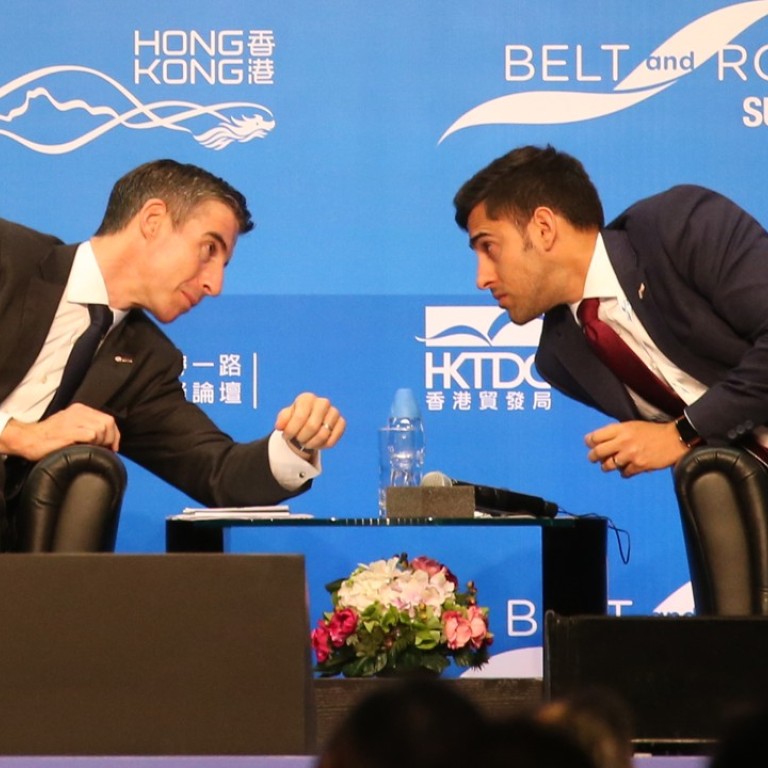
Interest in belt and road projects remains huge, but investors demand better risk management
There is tremendous interest in belt and road infrastructure projects, but investors are demanding stringent risk management measures to safeguard their investment against political and currency risks, according to a senior HSBC executive.
“HSBC is very keen on providing support to its clients in these projects, from helping them arrange financing to consulting and even providing risk management services,” James Cameron, co-head of infrastructure and real estate group for Asia-Pacific at HSBC, said at a Belt and Road summit on Thursday.
The Belt and Road Initiative is a Beijing-led project that aims to rebuild the ancient Silk Road in 65 countries by building infrastructure projects such as roads, ports, railway and power plants to promote trade flow.
Risk management plays an important role as many of these infrastructure projects are in emerging markets where the chances of legal, political and commercial disputes are high.
Cameron said a major risk factor would be political disputes between neighbouring countries, which could lead to a substantial delay or even cancellation of a project.
The newly elected government in Malaysia led by Prime Minister Mahathir Mohamad is reassessing some Chinese funded infrastructure projects in the country.
Some projects have been delayed because of difficulties in land acquisition and environmental concerns, Cameron added.
According to the Hong Kong International Arbitration Centre, the number of cases it handled involving parties from nations covered by the Belt and Road Initiative jumped 77 per cent to 124 last year.

Almost a third of last year’s disputes were between parties from China and other nations covered by the initiative last year, up from 17 per cent in 2016.
Then there are revenue risks that these projects may not be able to generate enough income to provide returns to investors.
Investors are also worried by local currency risks in markets such as Vietnam and Indonesia which do not have long-term debt market for institutional investors to raise funds in local currency.
Cameron said the development of more local currency debt markets as well as government support in giving fast approvals to these projects would make international investors feel more comfortable to invest in these projects.
Tim Warren, head of credit lines for Asia-Pacific at Zurich Insurance, said the insurance sector could offer a range of risk cover for these projects.
“There is insurance cover for currency risks if investors are unable to remit local currency back home,” Warren said. “There is also credit insurance to cover suppliers from non-payment.”
Moses Cheng Mo-chi, chairman of the Insurance Authority, said on Tuesday the regulator plans to set up a platform to provide information for Belt and Road infrastructure projects so that insurance cover can be bought in Hong Kong.
The insurance platform would be similar to the Hong Kong Monetary Authority’s (HKMA) Infrastructure Financing Facilitation Office (IFFO) set up in July 2016 to facilitate infrastructure investments and financing. The IFFO has so far signed up 90 organisations as partners.
HKMA deputy chief executive Eddie Yue said at the summit that Hong Kong could become a fundraising hub for these projects, especially green bonds.
The HKMA last year provided US$1 billion to a programme run by the World Bank’s International Finance Corp that could help boost the de facto central bank’s investment returns by supporting environmentally friendly infrastructure projects in emerging markets.

